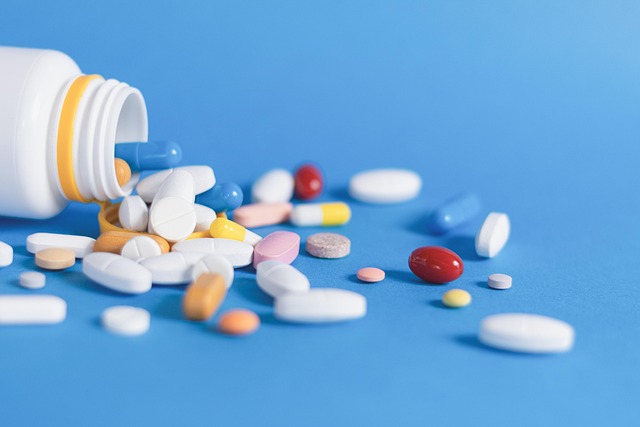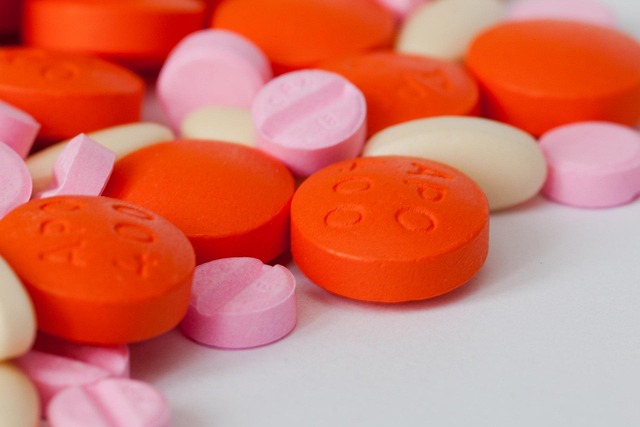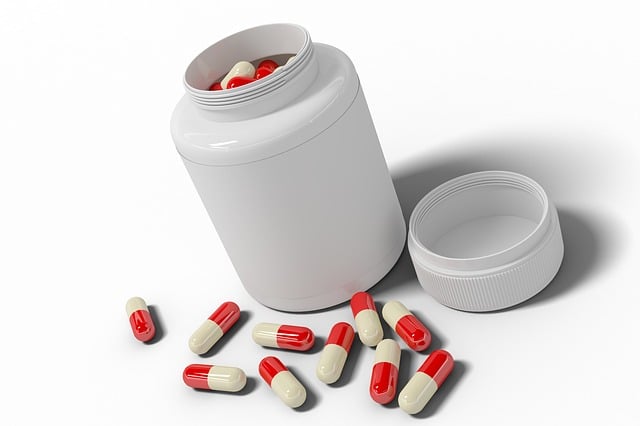GLP-1 receptor agonists (GLP-1 drugs) are innovative medications for type 2 diabetes management. They mimic the gut's natural hormone, GLP-1, to stimulate insulin secretion and suppress glucagon release, improving glycemic control. Additionally, these drugs reduce appetite, promote weight loss, and offer cardiovascular benefits. While they have side effects like gastrointestinal issues, regular monitoring can manage them. Available as injections or pills, GLP-1 drugs enhance medication adherence and improve quality of life. Ongoing research explores their potential in cardiovascular health and extended use, with goals to enhance efficacy, safety, and personalization for better diabetes management.
GLP-1 receptor agonists, a groundbreaking class of diabetes medications, are transforming the way we manage the condition. These innovative treatments mimic the effects of the body’s natural hormone, GLP-1, which plays a crucial role in regulating blood sugar levels. This article delves into the science behind these agonists, exploring their mechanism of action and the significant benefits they offer to type 2 diabetes patients. From enhancing insulin sensitivity to aiding weight management, we uncover why GLP-1 drugs are revolutionizing diabetes care.
Understanding GLP-1 Receptor Agonists: How Do They Work?

GLP-1 receptor agonists are a class of drugs designed to mimic the effects of the natural hormone glucagon-like peptide-1 (GLP-1). They work by binding to GLP-1 receptors in the brain and gut, stimulating insulin secretion in response to food intake. This process helps lower blood sugar levels, as seen in type 2 diabetes patients. Additionally, these drugs can slow down gastric emptying, leading to a feeling of fullness and reduced appetite.
The unique mechanism of action sets GLP-1 drugs apart from other diabetes medications. They not only assist in glycemic control but also promote weight management, making them a versatile tool in diabetes management. This dual benefit is particularly advantageous for folks living with both type 2 diabetes and obesity.
The Role of GLP-1 in Regulating Blood Sugar Levels

GLP-1, or glucagon-like peptide-1, plays a pivotal role in blood sugar regulation. Secreted by intestinal L cells in response to food intake, GLP-1 stimulates insulin secretion from the pancreas, helping to lower blood glucose levels. This effect is particularly pronounced when blood sugar is high, making GLP-1 a key player in responding to and managing metabolic demands.
Beyond its role in insulin release, GLP-1 also suppresses glucagon secretion, reducing the production of glucose by the liver. This dual action makes GLP-1 drugs an effective tool in diabetes management, as they not only stimulate insulin but also curb excessive glucagon, contributing to improved glycemic control.
Benefits for Type 2 Diabetes Patients

For Type 2 diabetes patients, GLP-1 receptor agonists offer a multitude of benefits that can significantly improve their overall health and quality of life. These drugs mimic the effects of the natural hormone GLP-1, which is produced in the gut in response to food intake. By stimulating GLP-1 receptors, these medications enhance insulin secretion in a glucose-dependent manner, meaning they promote insulin release only when blood sugar levels are high, thus avoiding hypoglycemic episodes.
In addition to their role in glycemic control, GLP-1 drugs have been shown to reduce appetite and promote satiety, leading to weight loss. This dual action not only helps patients manage their diabetes more effectively but also addresses the high prevalence of overweight and obesity among Type 2 diabetics. Furthermore, these medications may offer cardiovascular benefits by lowering blood pressure and improving lipid profiles, thus reducing the risk of heart disease, a common complication in this patient population.
Improved Insulin Sensitivity and Secretion

GLP-1 receptor agonists, a class of drugs designed to mimic the effects of the natural hormone GLP-1, offer significant advantages in diabetes management by improving both insulin sensitivity and secretion. These drugs stimulate insulin release from the pancreas in a glucose-dependent manner, ensuring that insulin production rises only when needed, thereby preventing hypoglycemia. This targeted approach enhances overall insulin sensitivity, making it more effective at lowering blood sugar levels.
By increasing insulin sensitivity, GLP-1 drugs help cells throughout the body absorb glucose more efficiently. This process not only aids in managing blood sugar but also contributes to improved metabolic health and potentially reduces the risk of long-term diabetes complications. The dual action of enhancing both insulin secretion and sensitivity makes GLP-1 drugs a valuable tool in the treatment of type 2 diabetes, offering better glycemic control and an improved quality of life for patients.
Weight Management: A Unique Advantage

One of the unique advantages of GLP-1 receptor agonists is their ability to aid in weight management, which sets them apart from other diabetes medications. These drugs not only help regulate blood sugar levels but also induce feelings of fullness and reduce appetite. By doing so, they can contribute to a reduction in overall calorie intake, leading to healthy weight loss. This effect is particularly beneficial for individuals with type 2 diabetes who often struggle with weight management as part of their condition.
Compared to other diabetes treatments, GLP-1 drugs offer a dual benefit by directly influencing blood sugar control and indirectly supporting weight loss goals. This two-pronged approach can significantly enhance the overall effectiveness of diabetes management, making these agonists a valuable tool in helping patients achieve better health outcomes and improved quality of life.
Potential Side Effects and Safety Considerations

While GLP-1 receptor agonists offer significant advantages in diabetes management, it’s crucial to be aware of potential side effects and safety considerations. These drugs, designed to mimic the effects of the natural hormone GLP-1, can cause gastrointestinal issues like nausea, vomiting, or diarrhea in some individuals. Additionally, they may lead to an increased risk of pancreatitis and gallstones.
However, these adverse effects are typically mild to moderate and often resolve over time. Close monitoring by healthcare professionals is essential during the initial stages of treatment. Adjustments to dosage or medication selection can be made if side effects persist. Moreover, regular screening for pancreatitis and gallbladder issues is recommended to ensure patient safety and maintain optimal diabetes control with GLP-1 drugs.
Lifestyle Integration and Patient Compliance

GLP-1 receptor agonists, a class of drugs that mimic the effects of the natural hormone GLP-1, offer more than just blood sugar control. One significant advantage is their potential to integrate seamlessly into patients’ lifestyles. These medications are typically administered via injection, but some forms are now available in pill form, increasing convenience and patient acceptance. This ease of use encourages better medication adherence, a critical factor for effective diabetes management.
Patient compliance with GLP-1 drugs can be enhanced by their ability to reduce hunger pangs and delay gastric emptying, leading to increased feelings of fullness and reduced food intake. As a result, patients may experience improved overall well-being, making it easier to maintain a healthy lifestyle that includes regular exercise and balanced meals—key components in diabetes management.
Future Prospects: Emerging Research and GLP-1 Drugs

As research continues to evolve, the future prospects of GLP-1 receptor agonists in diabetes management look promising. Emerging studies are delving into their potential beyond blood sugar control, exploring their role in cardiovascular health and weight management. These drugs have shown promise in reducing the risk of heart disease and stroke, which are common complications in diabetics. Additionally, recent research has highlighted their ability to aid in weight loss, offering a dual benefit for patients’ overall well-being.
The ongoing development of GLP-1 drugs focuses on enhancing their efficacy and safety profiles. Scientists are working on improving the duration of action, reducing side effects, and personalizing treatments based on individual patient needs. These advancements aim to make GLP-1 therapies more accessible and convenient, potentially transforming diabetes management into a more sustainable and patient-centric approach.
